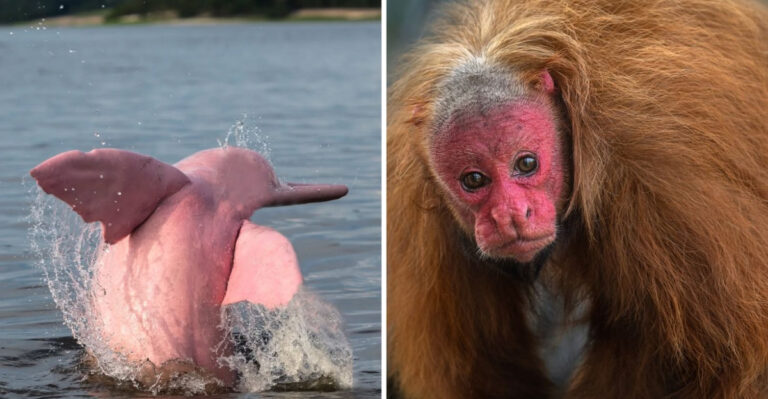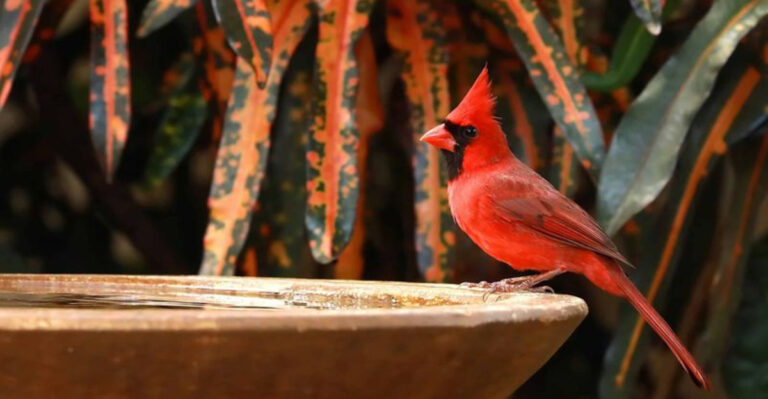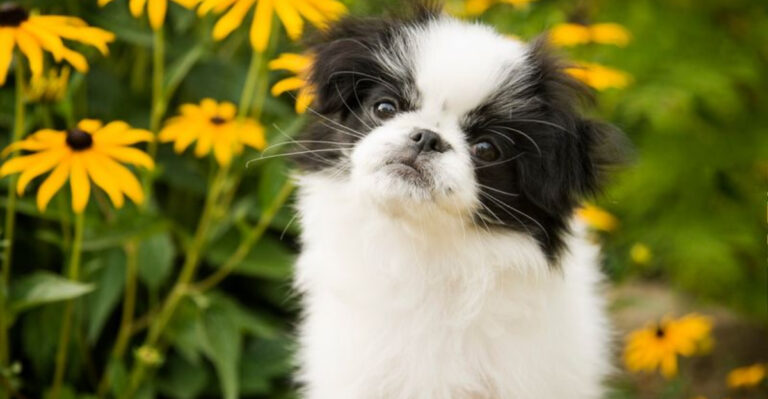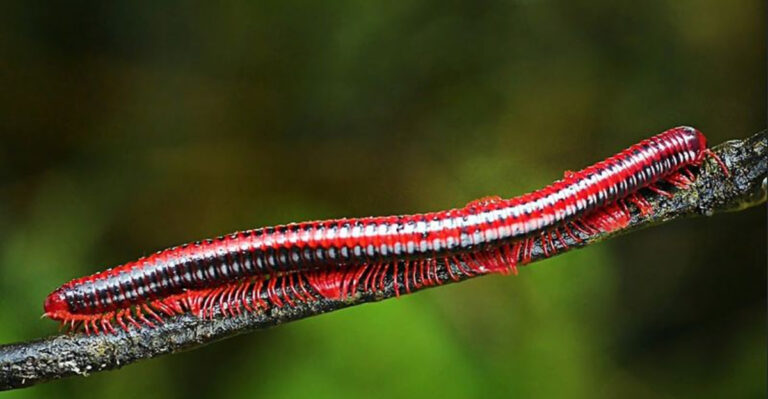Horse Colors: The Complete List From Rarest To Most Common
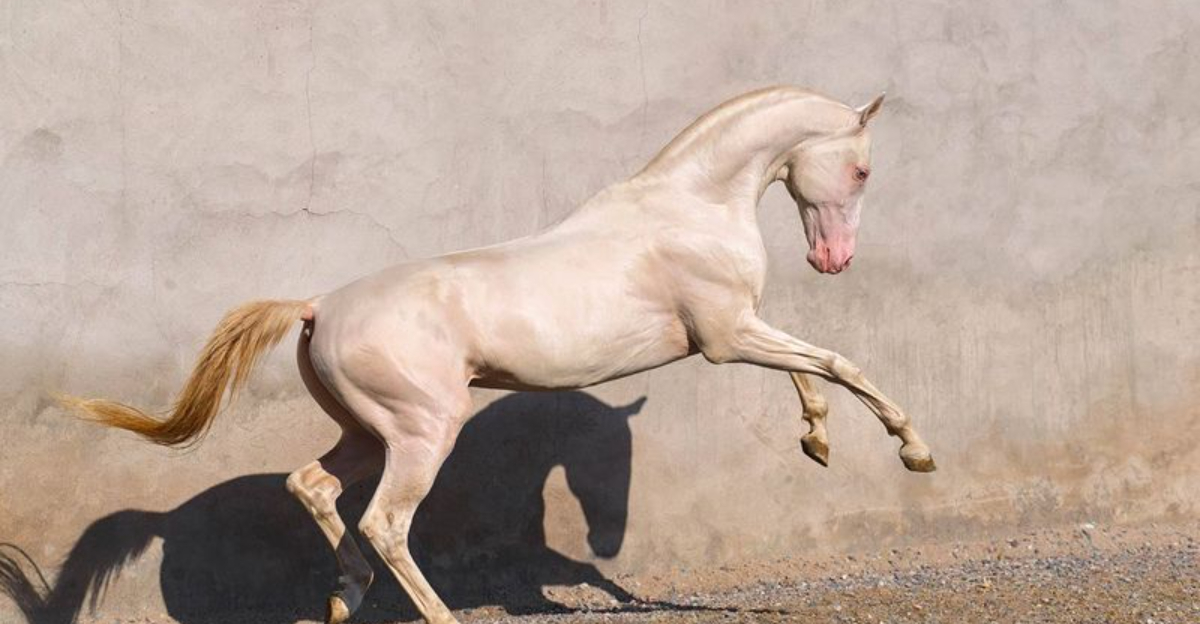
Ever wondered why horses come in so many stunning colors? From the elusive silver dapple to the classic bay, horse colors showcase nature’s artistic palette.
These colors aren’t just beautiful—they’re influenced by genetics, breed history, and sometimes even geographical origins. Let’s explore the fascinating spectrum of horse colors, starting with the rarest gems and ending with those you’ll spot in nearly every stable.
1. Silver Dapple

Imagine moonlight dancing across water—that’s the magic of silver dapple horses. This rare genetic marvel occurs when a black or bay horse carries the silver dilation gene, transforming dark manes and tails into flaxen or silver-white.
The body color lightens to a chocolate or taupe shade with distinctive dappling patterns. Most commonly found in Rocky Mountain and Icelandic horses, this color sometimes accompanies eye abnormalities called Multiple Congenital Ocular Anomalies.
2. Brindle

Looking like they’ve stepped out of a fantasy novel, brindle horses display unusual vertical stripes or streaks across their coats. These tiger-like markings result from a rare genetic chimera condition where the horse carries two different sets of DNA.
No two brindle patterns match, making each horse a living masterpiece. So scarce is this coloration that many horse enthusiasts go their entire lives without encountering one in person.
3. Cremello
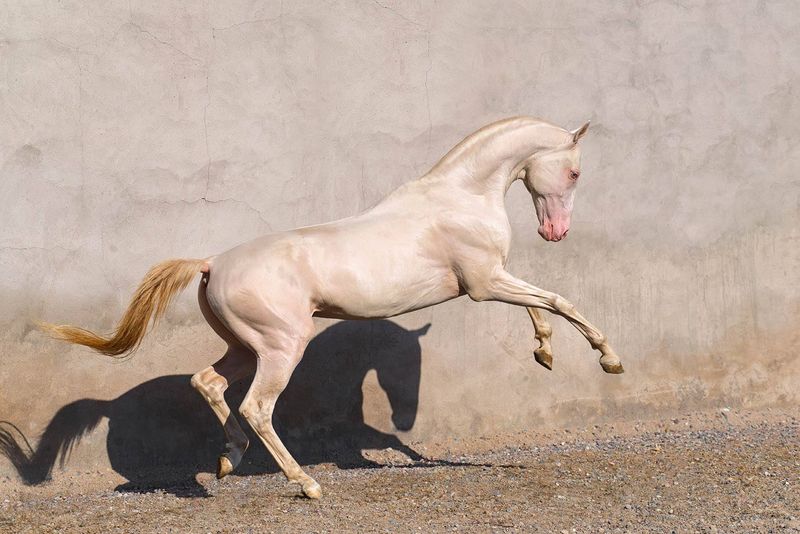
Dressed in cream with pink skin underneath, cremellos often get mistaken for albinos but they’re actually double-dilutes of chestnut genes. Their most captivating feature? Crystal blue eyes that seem to hold the sky within them.
The creamy coat appears almost white but carries subtle golden highlights in certain light. Historically misunderstood and sometimes unwanted, these horses now command premium prices from breeders seeking to produce palominos and buckskins.
4. Perlino
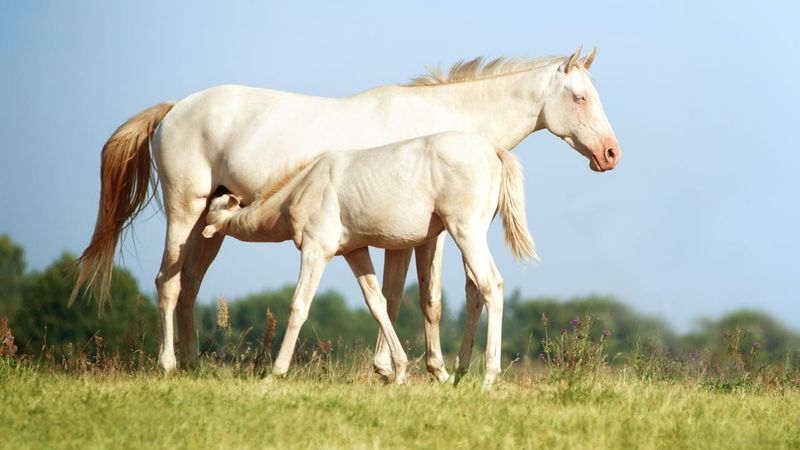
Ghostly yet glamorous, perlinos result from double cream dilution on bay base coats. Unlike their cremello cousins, they sport slightly darker points—mane, tail, and legs—with a pearly pink sheen that glimmers in sunlight.
Their blue eyes and pink skin make them sensitive to sun exposure. Cowboys once called these horses “cotton-eyes” and considered them unlucky on cattle drives, believing their unusual appearance spooked cattle.
5. Champagne
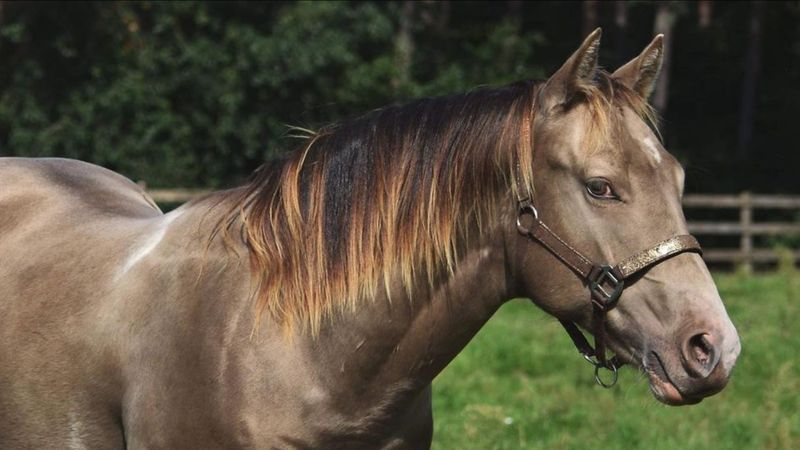
Fizzy like the drink they’re named after, champagne horses carry a gene that dilutes both red and black pigments while adding a metallic sheen. Their skin resembles freckled bronze, and they’re born with striking blue-green eyes that darken with age.
Four main variations exist: classic, amber, gold, and sable champagne. The color wasn’t officially recognized until 1996, meaning many champagne horses were previously misidentified as palominos, buckskins, or duns.
6. Grullo
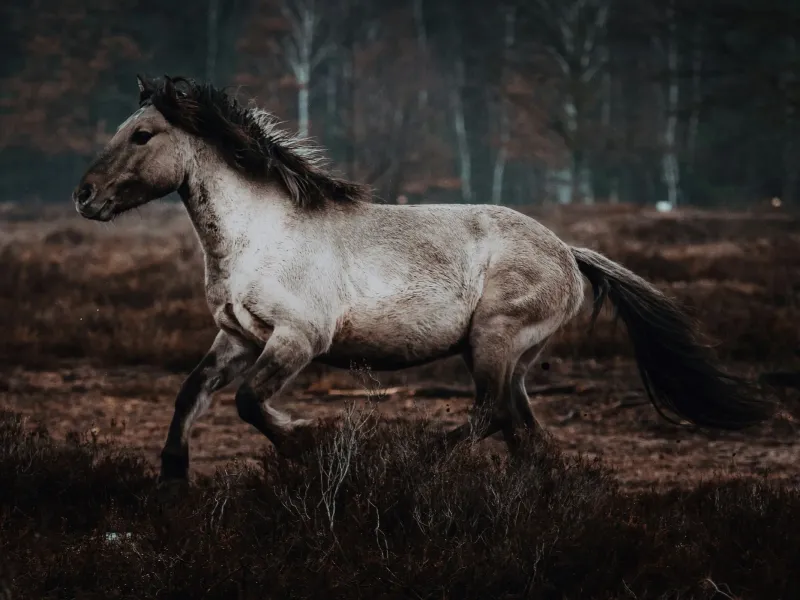
Smoky as winter twilight, grullo horses showcase the dun gene on a black base coat. The result? A mouse-colored body with primitive markings—dorsal stripe, leg barring, and shoulder stripes—that hearken back to their wild ancestors.
Favored by working cowboys for their hardiness and camouflage capabilities in desert landscapes. The color ranges from light silvery-blue to deep smoky charcoal, all with that characteristic “smoky” appearance as if the horse rolled in ashes.
7. Buckskin
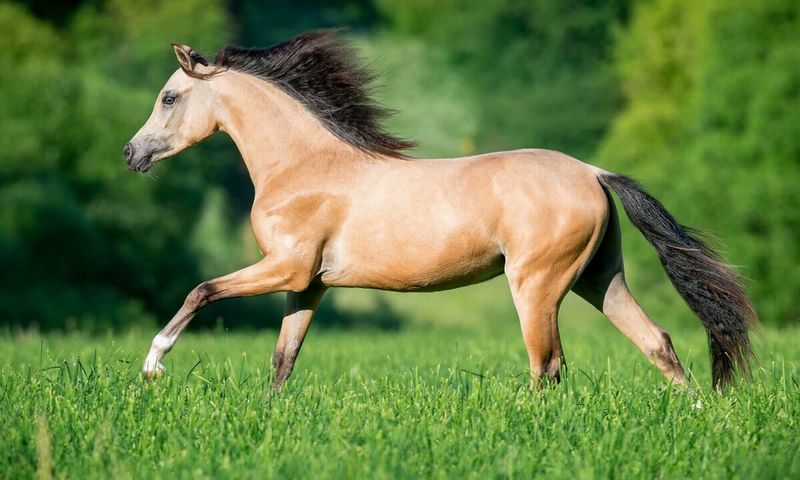
Golden as treasure with jet-black points, buckskins embody the spirit of the American West. Created when a cream dilution gene acts on a bay horse, they sport the perfect combination of tan body with dark mane, tail, and legs.
Cowboys prized these horses for their durability and visibility in dusty conditions. The buckskin’s coloration offers natural camouflage in dry grasslands while their dark points protected sensitive areas from sunburn during long days on the range.
8. Palomino
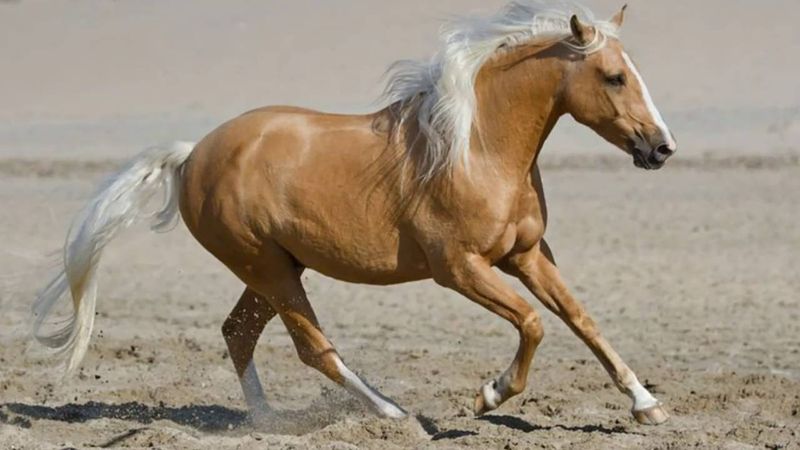
Sunshine made flesh, palominos dazzle with their golden coats and flowing white manes and tails. Their color ranges from light cream to rich gold, always with those signature platinum-blonde accents.
Hollywood fell in love with palominos, featuring them in countless westerns. Roy Rogers’ famous Trigger was perhaps the most celebrated palomino in history. The coloration isn’t a breed but results from a cream dilution gene acting on a chestnut base.
9. Appaloosa Patterns
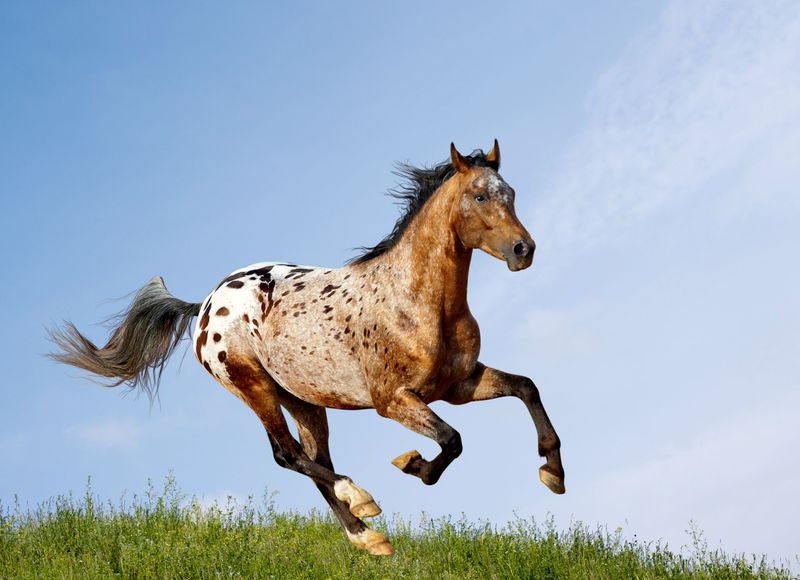
Nature’s abstract art appears on appaloosa-patterned horses with their spotted rumps, mottled skin, and striped hooves. The Nez Perce tribe selectively bred these distinctive horses, creating patterns ranging from blanket spots to full leopard complexes.
Each pattern is unique as a fingerprint. The same genes responsible for these eye-catching spots also contribute to night vision adaptations. Despite nearly facing extinction when the Nez Perce were defeated by the U.S. Army, these patterns have made a remarkable comeback.
10. Pinto Patterns
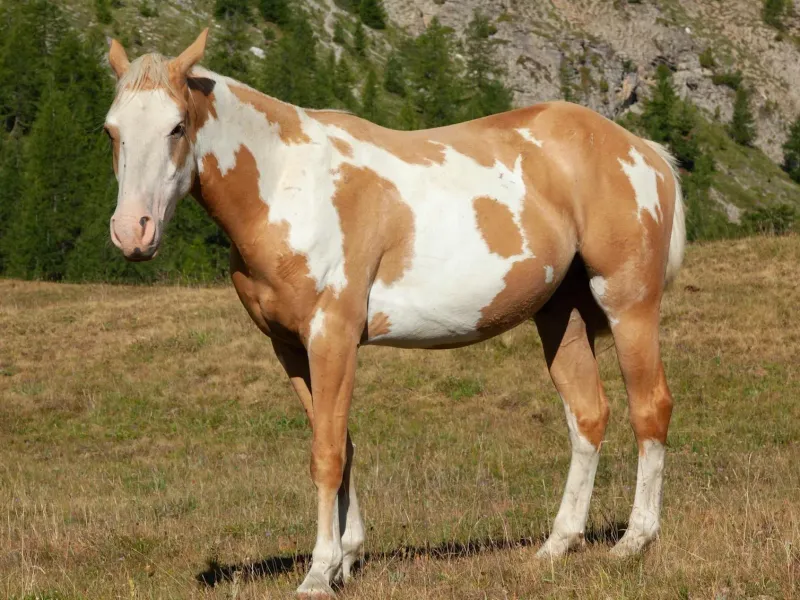
Splashed with bold patches of white against any base color, pinto horses stop traffic with their dramatic contrasts. Three main patterns exist: tobiano (white crosses the topline), overo (white doesn’t cross the back), and tovero (a mix of both).
Native Americans considered these patterns sacred, believing the horses carried special medicine. The random distribution of color makes each pinto a one-of-a-kind living canvas—no two patterns are ever exactly alike.
11. Roan
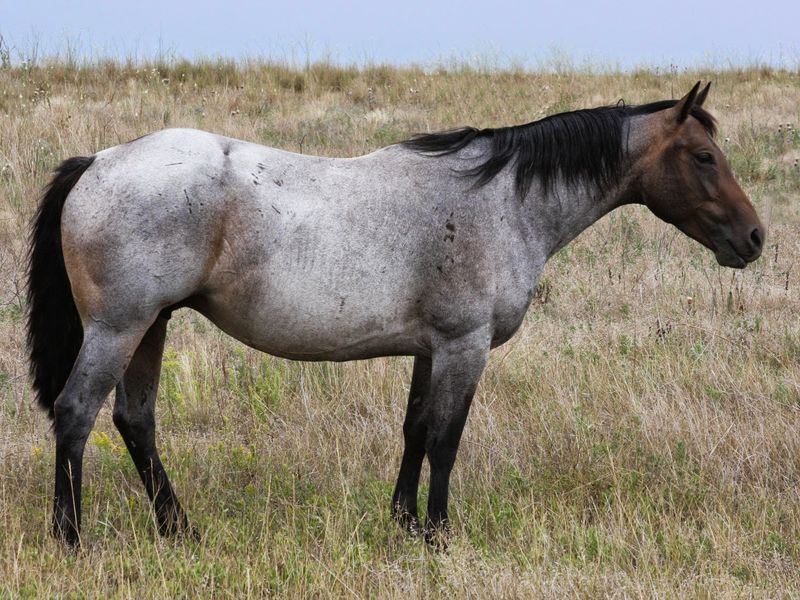
Frosted with white hairs sprinkled throughout their coat, roans give the impression of being dusted with snow. This fascinating pattern maintains solid coloring on the head, mane, tail, and lower legs while the body appears misty.
Three main types exist: blue roan (black base), red roan (chestnut base), and bay roan. Unlike grays, roans don’t progressively whiten with age. The pattern sometimes creates a stunning “inverted V” on the shoulder called a corn mark.
12. Gray
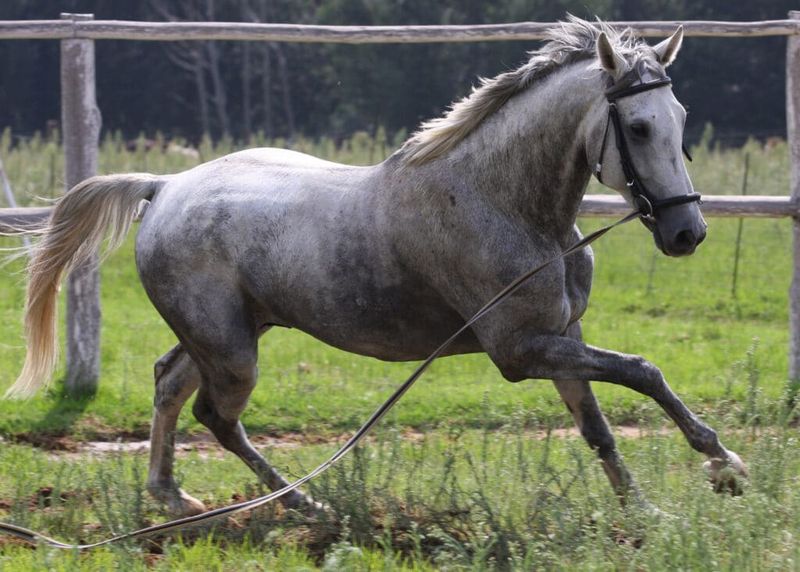
Born dark and growing lighter with each passing year, gray horses undergo a remarkable transformation throughout their lives. This isn’t actually a color but a progressive depigmentation process that eventually turns most horses white-like.
Young grays often display dramatic dappling patterns that horse lovers adore. Despite their eventual light appearance, true grays always have black skin beneath their coat. The same gene that causes graying is linked to a higher risk of melanoma.
13. Chestnut
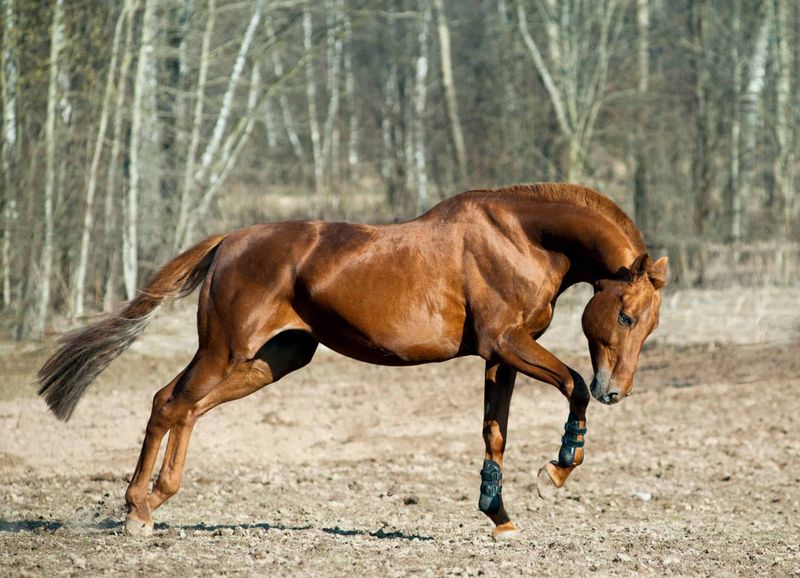
Ranging from copper penny to deep mahogany, chestnut horses showcase the beauty of red pigment in its purest form. Their manes and tails match or appear slightly lighter than their bodies, creating a harmonious look.
Genetic studies reveal chestnut as one of the oldest horse colors, appearing early in domestication. Light chestnuts with flaxen manes are sometimes mistakenly called palominos. The fiery temperament once associated with these redheads is just a myth—personality has nothing to do with coat color!
14. Black
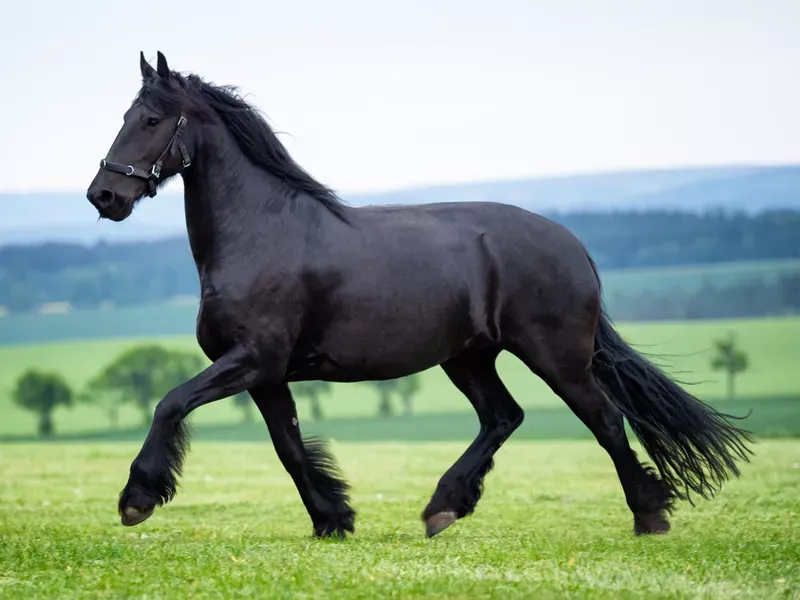
Midnight made flesh, true black horses display no brown hairs anywhere on their bodies. Their color comes from dense deposits of eumelanin pigment, creating that coveted jet-black appearance that glistens in sunlight.
Many horses that appear black actually fade to brown in sunlight—these are called “seal browns.” True blacks maintain their color year-round. In medieval Europe, knights preferred black horses for their imposing presence on the battlefield.
15. Bay

Reddish-brown bodies crowned with black points make bay horses instantly recognizable worldwide. This classic coloration results from a specific gene that restricts black pigment to the extremities—mane, tail, ear edges, and lower legs.
Bays range from light copper to deep mahogany, but always feature those distinctive black points. This coloration offered evolutionary advantages in the wild—dark legs disguised injuries from predators while providing extra protection against sunburn.

